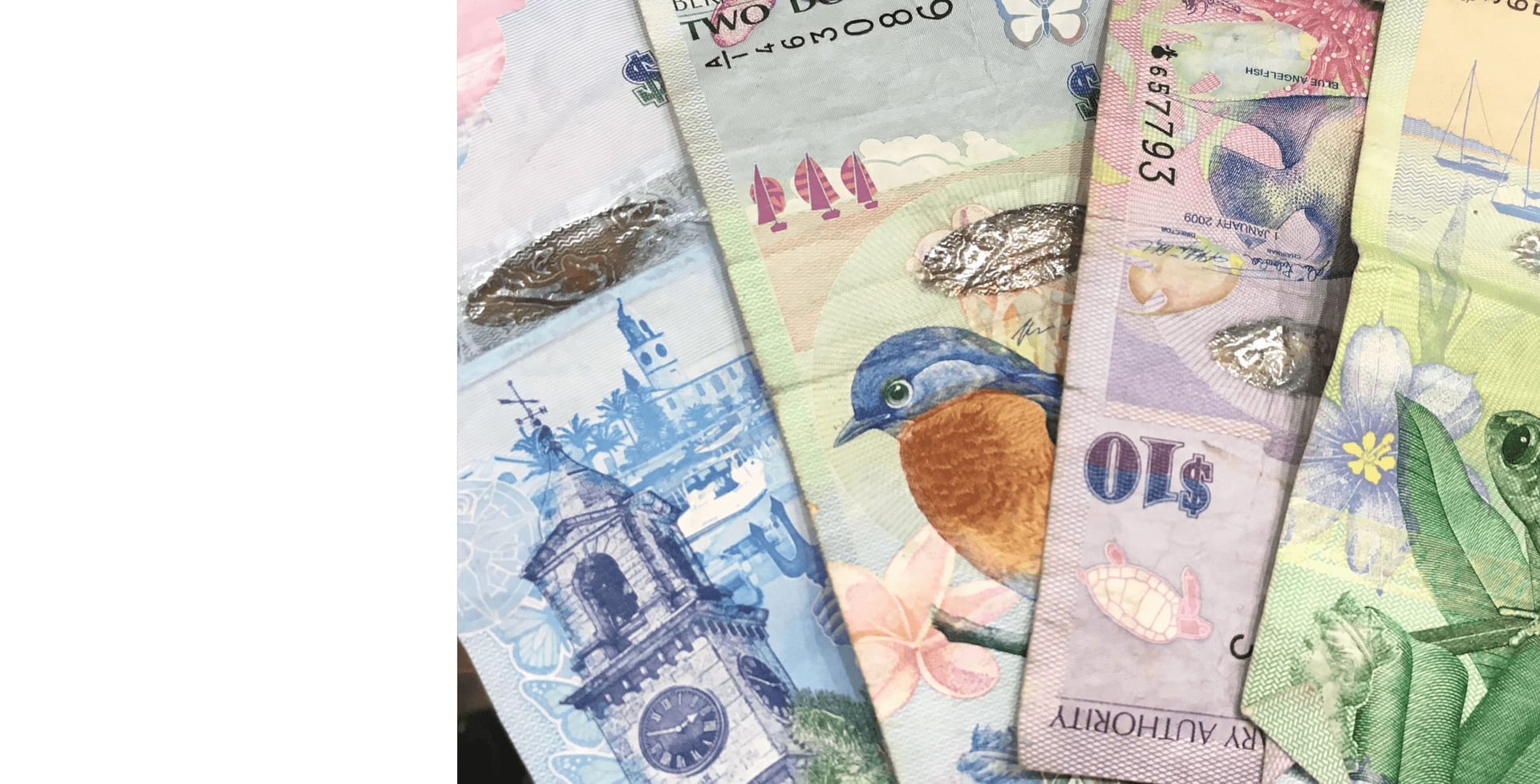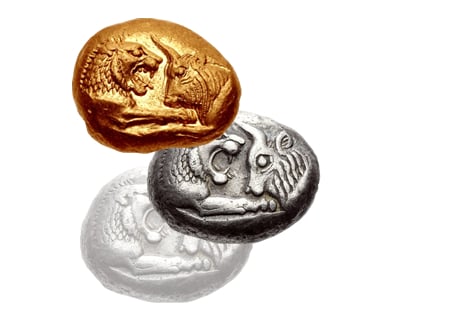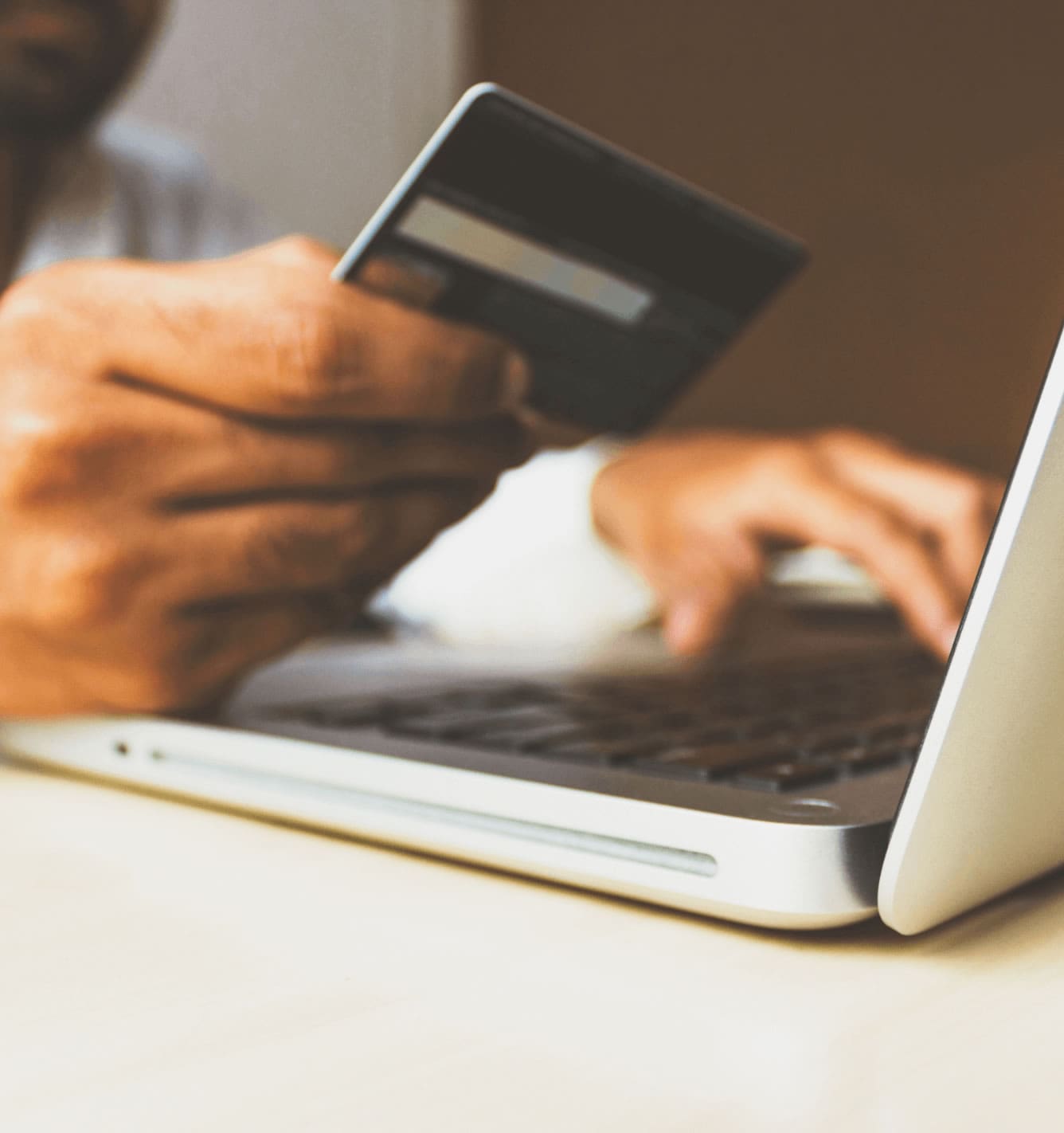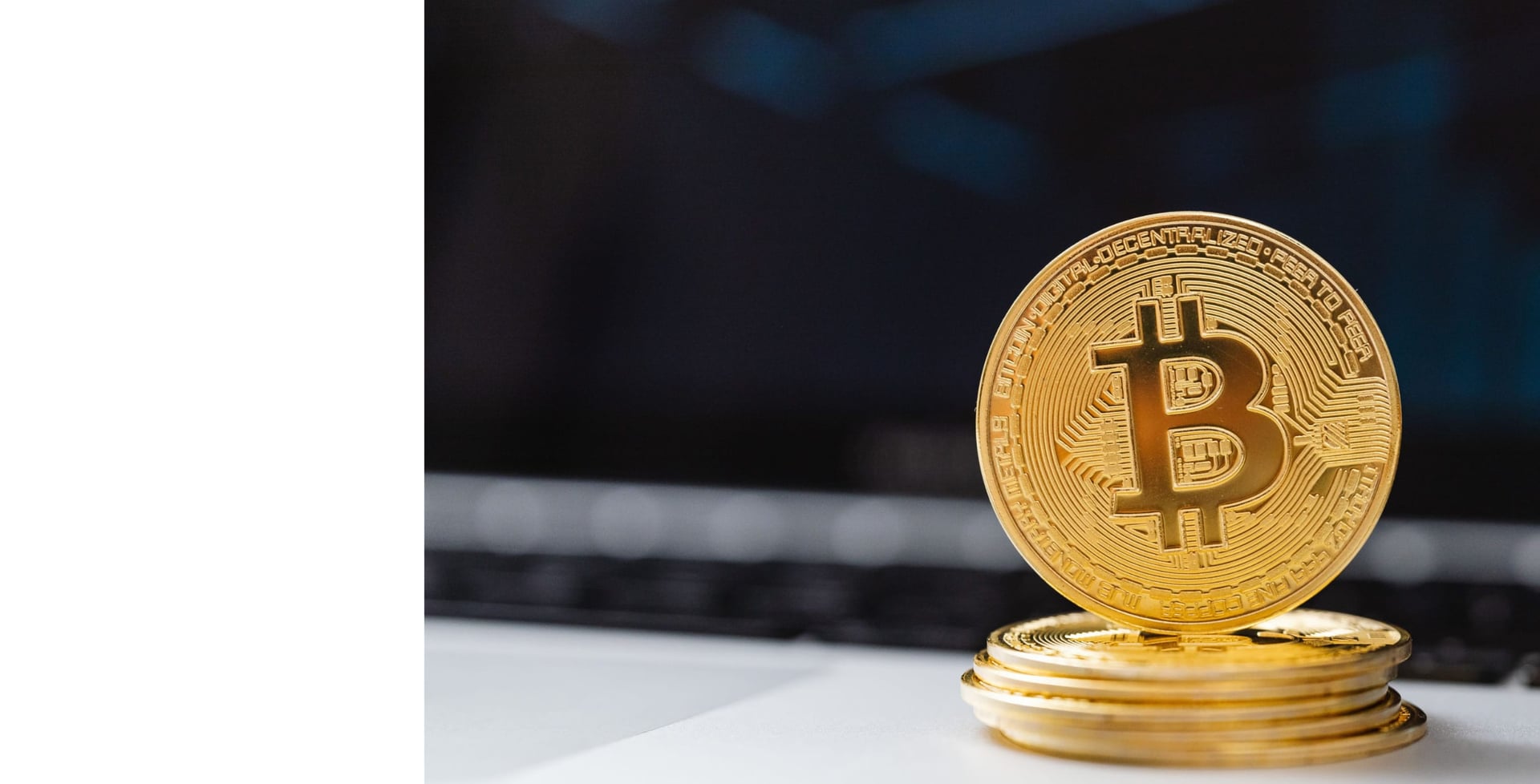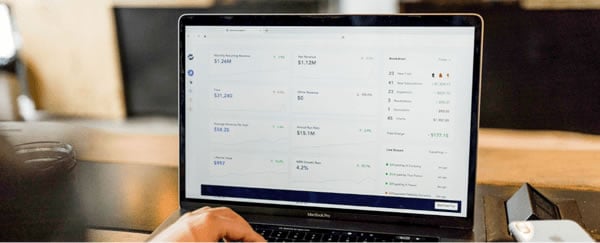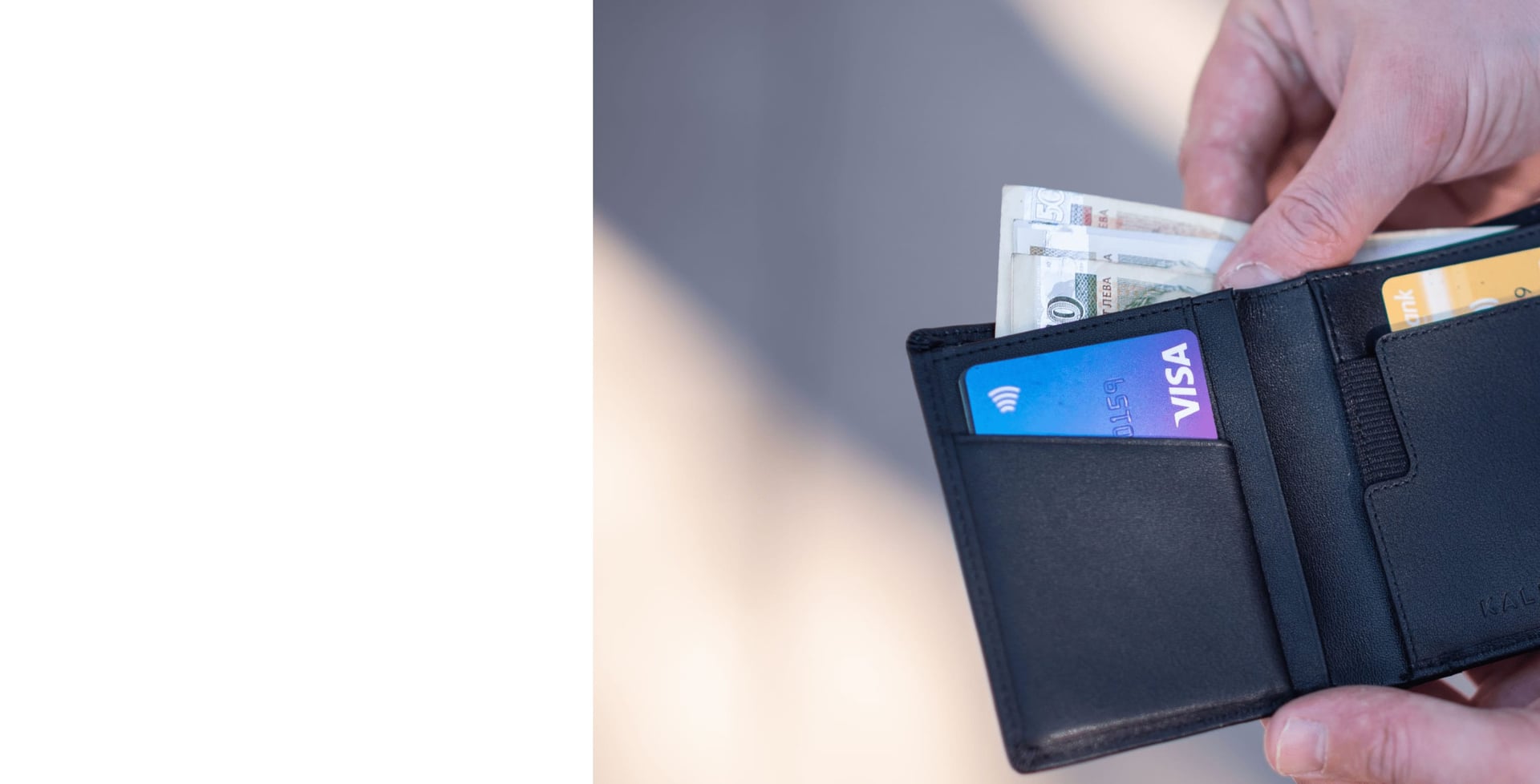The idea of a society that no longer relied on physical cash would have seemed like the stuff of science fiction at the turn of the century. But with technological advancements accelerating us into a new digital age, things are very different in 2021.
With payments as easy as a tap on a screen, the need for paper or metal money to change hands is becoming an increasingly unnecessary practice.
In this guide, we'll explore the possibilities of a cashless reality, while looking at how modern trends are constantly shifting. While a completely cashless society is still a few years away, all roads seem to lead us in that direction.
The exchanging of cash has always been a fluid process. While in recent years we’ve come to associate the custom with bank cards and online transactions, a century ago the idea of spending anything other than paper notes or metal coins might have seemed out of the question.
But financial payments didn’t start with these increasingly archaic practices. Let’s take a closer look at how the movement of money has evolved over time, as well as more contemporary trends that are changing the financial sector forever.
The exchange of currency hasn't always been cashless and has taken a variety of different forms throughout history. After all, money is just a medium of exchange that benefits the receiving party. It’s for this reason that gift giving has always been directly tied to the custom.
Thousands of years ago, gift giving would have been the norm for anyone looking to acquire something. This system, similar to modern day bartering or haggling, would have seen one party offer up a particular item in exchange for another.
While this would originally have been incredibly varied, as time progressed, essential items began to develop as the consistent commodities that would be traded. Things like animal skins, weapons, salt, grain, and even livestock became the first forms for recognized currency.
Given the variance in the quality of produce, it wasn't the case of flat exchange we see today. For example, one cow wouldn’t necessarily always translate to five bags of grain, if the heffer in question was underweight or sickly.
It was this lack of consistency that prompted societies to begin circulating their own form of standardized and measurable currency. China was amongst the first to adopt the practice, initially using miniature tools around 770 B.C. to provide a fairer form of exchange.
While these symbolic coins would be adopted by some, it wasn’t until 600 B.C. when the first state-official coin would be minted. Found in Lydia (modern-day Turkey), these coins would use symbols rather than numerical ordering to determine value. This is where the phrase “rich as Croesus” comes from, with Croesus being the name of the last Lydian king to mint money before the kingdom was absorbed by the Persian Empire.
The Chinese were at the forefront of paper-money usage, with some of the first examples reported in 700 B.C. However, it wouldn't be until after 960 A.D. that paper money became the norm across the country as a whole.
By the 16th century, the practice of paper money had been readily adopted across most of Europe. It was actually colonial governments in North America that first began to champion the use of paper currency by giving IOUs to colonists who ran out of cash due to the long gap between shipment arrivals from Europe.
With the need for commodity money dwindling, representative money was used instead. This meant that the material coins and paper notes were made from didn’t necessarily need to be of any value. It was more of a promise from a government to represent each note with a certain amount of silver or gold.
This was referred to as the Gold Standard. The practice of valuing money to this fixed point would remain the norm until the beginning of the Great Depression in 1929. The volatility of the market at this time saw banks and governments transition away from the Gold Standard method – instead choosing to regulate their own money internally.
While paper and money have remained part of day-to-day life ever since, their presence is dwindling with the introduction of online banking and digital transactions. Virtual currency, most famously Bitcoin, now stands as the next great step in the world of cash. While nobody can say for sure what will happen next, it’s likely we’ll continue to move closer to an entirely digital financial society.
For a condensed look at how money has evolved over time, check out this timeline:
Cattle are used as a common form of trading
Cowrie shells (a type of mollusc) are used as currency
China develops the first form of metal coinage
The Lydian Empire develops the first official currency
Paper currency becomes the norm across China
Paper money becomes the norm across Europe
The Gold Standard is used to value money representatively
The Great Depression ends the use of the Gold Standard
The first example of online banking is used
Bitcoin is created
The way we look at and spend money is changing every day. Our relationship with currency evolves as the world around us changes and adapts to new thoughts, cultures, and ideals. This evolution has given way to money trends that have reshaped how we think about finances.
Rather than just offering a debit, credit, or savings account for customers, banks now place much greater focus on whole-brand loyalty, which extends to features like insurance and investment products. Heightened customer service has also been put at the forefront of the banking experience.
This approach has been adopted as a result of the ease of changing banks in the modern age. While this would have been a real chore in the past, it’s relatively easy to abandon your bank for a better option in 2021. Likewise, banks are also aware that it’s easier to market secondary products to existing customers.
A lot of banks are realizing just how useful artificial intelligence (AI) can be, especially when it comes to ensuring resources aren’t being stretched too thin. These are particularly popular for anti-fraud, chat support and regulatory compliance factors. While not great for employees, AI can also save money on wages, which is seen as a big plus by most banks.
It was easy in the pre-digital age to place all customers under the same umbrella. In the 21 century, things are a little different with the analysis of data allowing companies and banks to target market segments and individuals. This often manifests in a customer being allowed to choose the exact benefits and types of policy they want when setting up an account. It can also extend to offers and promotions.
Financial technology (FinTech) companies are becoming an increasingly prevalent part of online banking. They often partner with banks to provide marketing, administration, and other tech-enabled support.
While the fluidity of money makes it hard to guarantee which of these trends will come to fruition and which won’t, it’s safe to say we stand on the precipice of a new age.
Just as with any trend, what applies in one country or region doesn't necessarily translate to another. Spending habits are different the world over, especially in the wake of the Coronavirus (COVID-19) pandemic. Let's assess the impact the virus has had on the world, from cash spending to general consumer habits.
While it might be tempting to blame the decline of physical money on the outbreak of COVID-19, the slide started long before the pandemic took hold in late 2019. Transitions to digital currency have been gradually occurring in the background for years.
In the 5-year span between 2009 and 2014, Cashless payments increased across the world from 269 billion to 390 billion. By late 2016, North America was making as many as 52% of all payments using non-cash forms.
At that time, Western Europe was making 66% of payments in cash, but things are starting to look very different in the wake of the COVID-19 pandemic.
Perhaps unsurprisingly, COVID-19 has played a huge part in the way we manage and handle our finances. With heightened safety around hygiene, the transaction of handheld cash has become less popular than ever.
The numbers really emphasize that, with the Bank of England highlighting how, in the U.K., there has been a sharp downturn in the amount of coins being circulated during the pandemic. The numbers for the United Kingdom show:
This rise in the number of notes in circulation isn’t just a U.K. quirk. The same effect took hold all across the world, with even the U.S. seeing a 12% rise in the number of notes in circulation in 2020.
The graph below shows the percentage of U.S. currency in circulation by year:
Source: Voxeu
A similar trend was exhibited in the months leading up to 2000, when the prophesied “Y2K bug” was set to strike and leave the world in chaos. The research shows that people choose to hold onto their money at times of great uncertainty.
Figures from FRBSF go on to highlight how this translates on a person-by-person basis. They found that the average American was storing $81 in cash, as opposed to $69 prior to the pandemic.
The study goes onto mention that as few as 34% of people surveyed made any kind of in-person payment after the COVID-19 pandemic began, with as many as 7% also stating that a merchant outright refused to accept cash payments. Other figures that support the continued move away from physical cash include:
The general trend of a reduction in the amount of cash being spent has been mirrored across the world. A survey by YouGov found that most countries have seen a serious drop-off in the amount of cash being spent since the pandemic hit.
Some of the most notable dips in spending were:
Interestingly, the decline in cash usage is a divisive topic across the globe. While some nations seem to view it as a good thing, others are more concerned about this step away from traditional methods.
| India | 79% |
| Malaysia | 65% |
| UAE | 63% |
| Indonesia | 63% |
| Vietnam | 60% |
| Spain | 53% |
| France | 52% |
| Germany | 51% |
| U.S. | 50% |
| Canada | 50% |
While it’s clear people are not willing to totally give up on cash altogether, it’s hard to deny the pandemic’s impact on what is already a regressing form of finance. It’s for this reason most people cite the pandemic as an accelerator rather than the direct cause of an increasingly cashless world.
The impact of COVID-19 wasn’t just felt on a social level. Many businesses and financial bodies were also drastically affected by the sudden shutdown of the world. This resulted in huge changes to the way people spent their money all across the globe.
McKinsey & Company looked at 45 different countries, assessing how consumer habits shifted as a result of the pandemic. Intriguingly, they found countries like India, China, and Indonesia were relatively relaxed about their spending, while Europe, the Americas, and Japan had honed in on only spending on the essentials.
Their study showed:
The main areas where people in the U.S. will continue to cut back (down 30-49% in all cases) include:
The survey also found that loyalty had taken a huge hit for most brands during the pandemic. The study found that a high percentage of people in most countries were trying new brands, as well as intending to continue to try new brands:
Online purchases saw major growth. Unlike other trends, this appears to be something universal – perhaps underpinning the continued move to digital. The study found:
In the U.S., stats showed online spending increased:
There were no areas where online spending was expected to decrease.
In the wake of COVID-19, PricewaterhouseCoopers (PwC) completed 2 in-depth consumer surveys that published some standout findings:
Unsurprisingly, any trends around traveling saw a sharp decline in popularity. Deloitte highlighted this in a recent report, which showed net spending patterns had completely tailed off across the travel industry as a whole.
They carried out four surveys, with each showing a drastic drop-off on the number of people who were willing to travel in the near future:
With the pandemic still playing a significant role in day-to-day life, it’s tough to know if these habits are going to persist, or if normality is at least somewhat restored in time. Either way, it’s hard to imagine COVID-19 won’t have at least some impact on how we shop moving forwards.
So, just how likely is a cashless future? While some countries might be closer than others, nobody has yet to fully commit to a society with a completely cashless form of payment. Let’s now look at the current state of cash-dependent and independent countries, as well as what a cashless future could look like.
Even though most nations have taken huge steps towards a time when money is completely digital, others still rely heavily on physical payments. Often, these countries will be at the lower end of the GDP scale, with most citizens unbanked and using in-hand cash payments for everything.
That’s why it’s perhaps no shock that World Atlas reported some of the places most dependant on cash to be countries such as:
But while the reliance of this form of payment makes sense in places where digital banking isn’t a possibility, it’s interesting to note which developed nations still stick to older practices.
The most recent World Cash Report highlighted which First World countries are still reliant on cash usage. They found the countries where cash was still king to be:
| Spain | 87% |
| Italy | 86% |
| Japan | 82% |
| Germany | 80% |
| France | 68% |
While these nations are high on the list, it doesn’t mean they want to stay there. The Japanese government, for example, has pledged to try to reduce all cash spending to 40% by the year 2025.
It’s interesting to note that the bulk of these countries were also amongst those found to be the least happy about a move away from cash on the YouGov poll.
At the other end of the scale, a handful of countries are slowly moving away from this kind of payment. In these places, the computer is king. Money is becoming increasingly digital, with most payments made either online or by using debit and credit cards.
Some of the countries which are closer to a completely cashless form of society include:
The nation of Finland is one of the countries most prepared for a cashless society. The Scandinavian country ranks amongst the top 5 in the world for e-commerce spending (as a percentage of GDP), internet banking usage, and smartphone shopping.
6% of this Asian nation’s entire GDP is now taken through e-commerce spending, with the average South Korean credit card having more than 100 transactions on it every year. What’s more, over half of the 1,600 bank branches in the country no longer accept cash deposits or even withdrawals.
Almost all U.K. citizens are familiar with making an online payment of some variety, with Britain’s GDP reliance on e-commerce transactions second only to China across the globe. Mobile payments have been available for more than a decade, making the nation one of the most prepared for a cashless future.
Internet banking is forecast to be the norm for up to 70% of Australians by the year 2022. It’s also expected that by the same year everyone in the country will have at least one smartphone. With new laws set to be introduced in 2021, digital payments should soon be an alternative across the whole nation.
China has been at the forefront of most digital changes across the past 30 years, so it’s perhaps no surprise to see them listed here. Amazingly, e-commerce spending is set to make up as much as 11.6% of their total GDP by the year 2022. As of 2019, the citizens of China had made 80 billion digital transactions and counting.
Source: Global Data
With these countries steering us into a new digital world, they seem best placed for the transition to a cashless world. But just what is that world going to look like?
Nobody knows exactly what will happen in the future – especially at a time when everything about the world is so unpredictable. That said, here are a few educated guesses about how a cashless society might impact the world around us.
The idea of one currency shared across the globe has always been something of a pipe dream. The logistics of recalling all existing coinage and notes, then standardizing the value of money in one global central hub are more than most would want to think about.
But with the internet drawing everyone closer together, we’re constantly edging towards a time when a concept that once seemed impossible becomes a reality. The introduction of the Euro showed at least a small scale implementation was possible. Without the need to manage an even distribution of coins and notes across the world, could we be about to see a digital rollout in the next few decades?
Much as they hate to hear it, banks are beginning to become a little redundant – at least in a physical capacity. With people able to store and manage their money completely digitally, the need to drop into your local branch is becoming less important.
It might make some feel uncomfortable to think of, but it’s quite easy for large companies to store our data. They use it for targeted marketing, to observe consumer trends, make predictions about what to invest in and a variety of other factors. While this already happens to an extent, a complete move to digital payments would make it a lot easier for transactions to be used as data.
If the prevalence of cashless transactions continues as all experts predict, it’s likely governments will look to introduce some form of official centralized virtual currency.
This has already been tentatively introduced in Singapore, where their PayNow initiative allows for direct person-to-person financial transfers without the need for a bank as a middle man.
And while the idea of a world without cash might seem scary to some, remember there are a variety of benefits to this kind of society:
Business owners will be pleased to hear a move to digital is likely to reduce financial risks to their company. It will instantly eliminate threats like employee theft, counterfeit money and robbery, while also reducing the cost of security.
In truth, this is something which applies to everyone to some extent. After all, with no physical cash to steal, it would take more than a petty thief to strip you of your earnings.
It can be a struggle to make payments abroad sometimes, especially if you’re going into smaller stores. With a global adoption of cashless payments, international transactions will become seamless. It’s also likely that annoying transaction fees will be a thing of the past.
It’s not unheard of for corrupt businesses and individuals to fail to pay tax on cash – which at times can be impossible for governing bodies to track. This problem would be completely eliminated in a world where every unit of currency can be digitally traced.
If you’ve ever made an in-store contactless payment, you’ve probably noticed how much quicker it was than handing over money, waiting for the clerk to count it out, then taking your change back and storing it safely in your wallet. A tap of a card on a machine saves you time.
If the idea of a future without cash is intimidating to you, you’re probably not alone. If you’re struggling to think how you might prepare for this kind of reality, make sure to keep this topical advice close to heart.
While you probably won’t need them, it’s always wise to keep a paper copy of any important documentation. These can be incredibly handy in the unlikely event of a tech error.
If you’re someone who keeps notes of what you’re saving and spending traditionally (pen and paper), think about converting to an online tool. It’s a great way to get your mind thinking in a digital manner.
If you aren’t already, now is the time to get to know online banking better. Being prepared for the future starts with understanding what we have here and now. Acquaint yourself with the basics and move on from there.
The more you know about how the future might look, the better prepared you’ll be for it. Take the time to find out as much as you can (this guide isn’t the worst place to start), then prepare for the cashless age.
We’ve covered a lot in this guide, but you may still have further questions about the possibility of a cashless society. Make sure to browse these useful secondary sources to find out further information.
